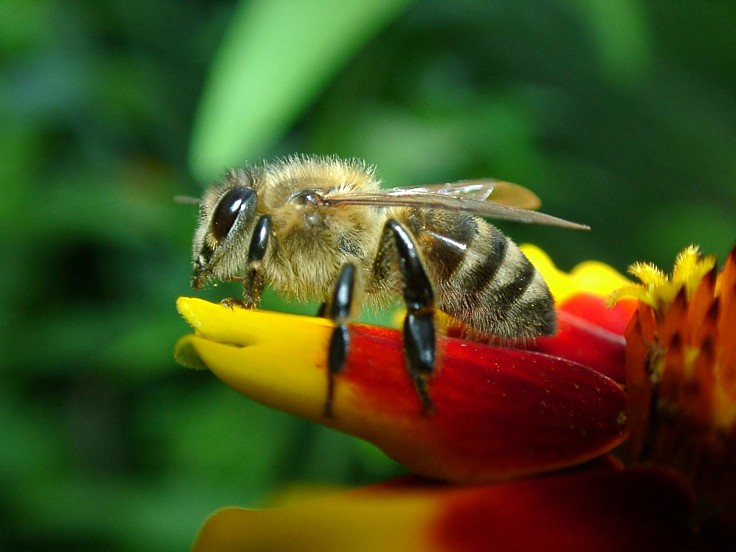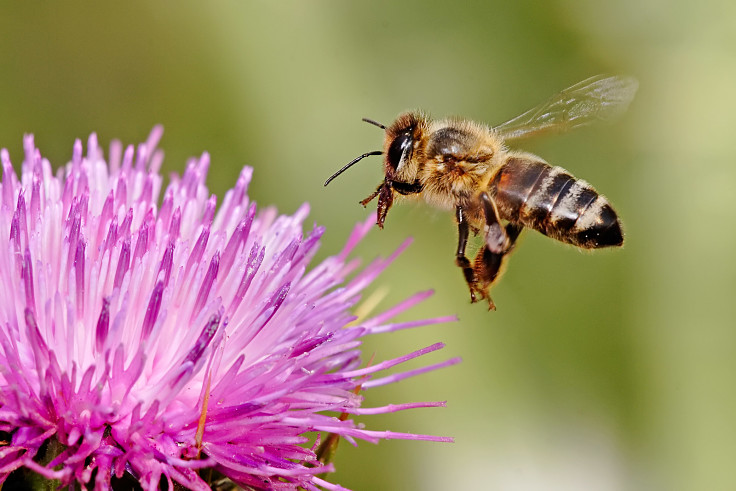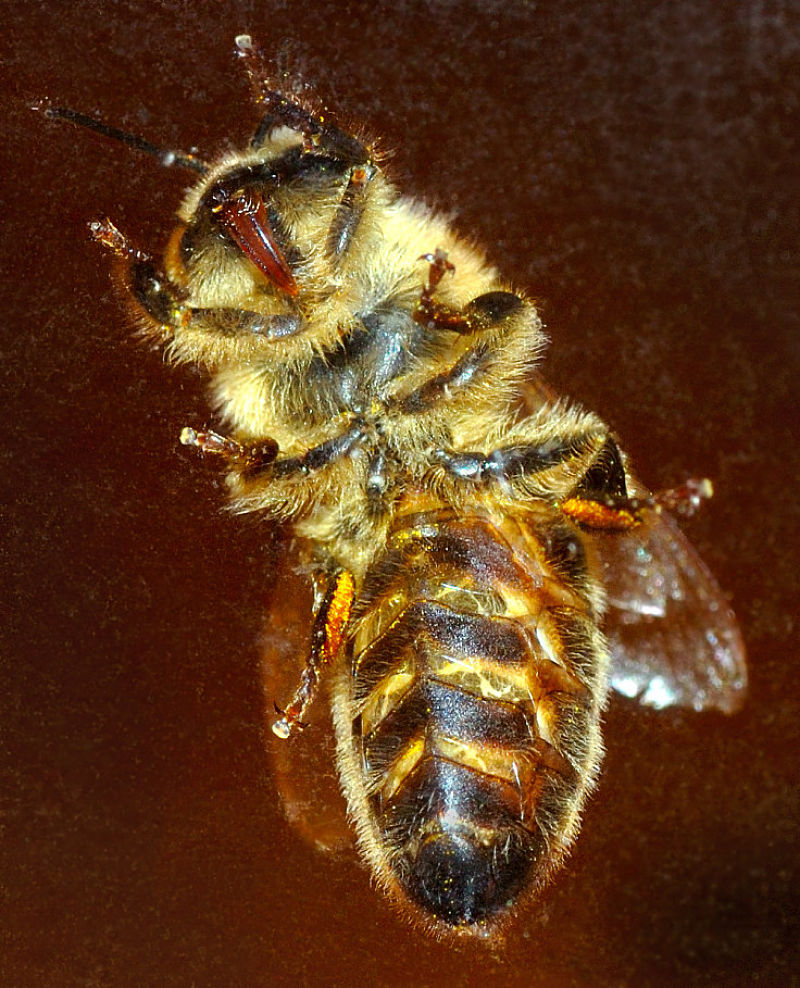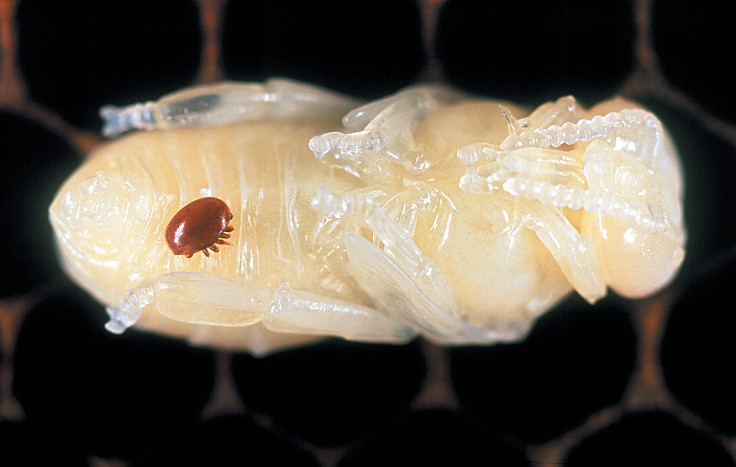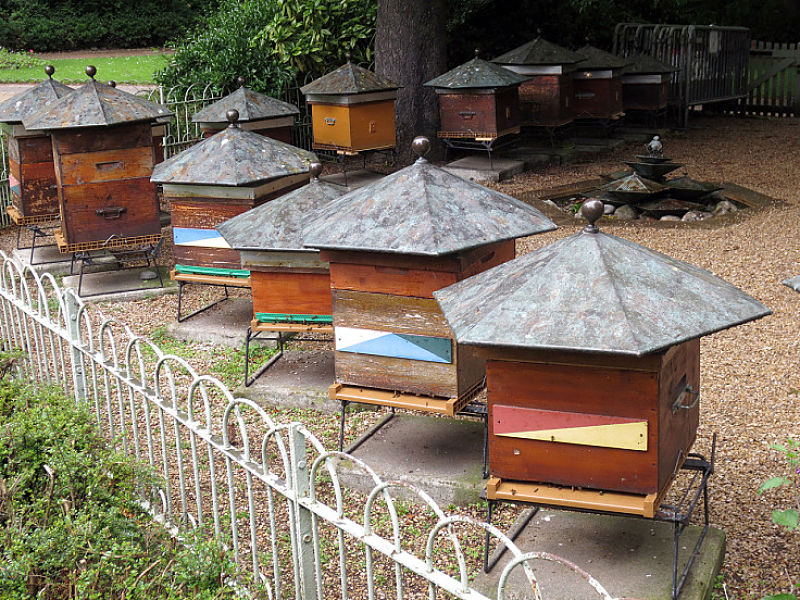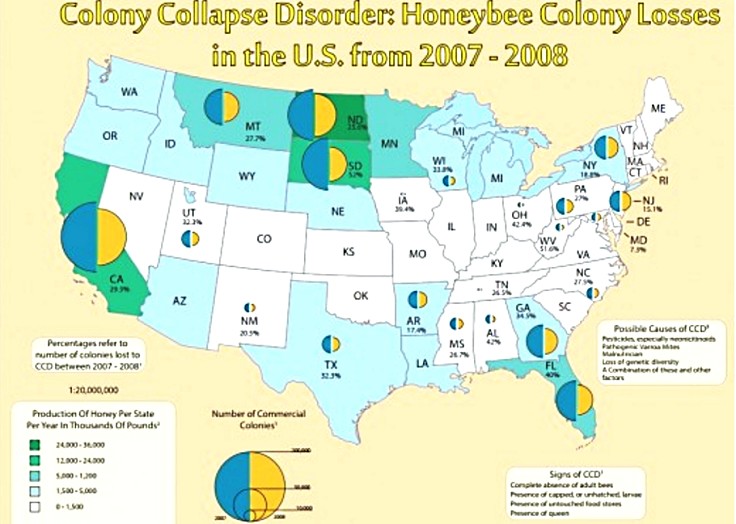Bee Friendly Garden Designs to Attract and Help Bees
There is growing concern about the plight of honeybees throughout the world. Bee numbers are declining rapidly due to disease, parasites and the ongoing impact of chemical pesticides and pollution. The exact cause of the bee decline is a mystery.
Bees are vital pollinators and their decline is a threat to agriculture and food production.
How can you help to save the bees? The best way is to make your own garden a safe haven for bees and to make it attractive and bee friendly. This means planting and managing your garden differently, adopting organic methods and banning pesticides. It is part of developing or modifying your garden layout and plantings for wildlife and adopting organic gardening methods.
You can also campaign to save bees in your own community. Finally you could consider adding your own bee hive to your backyard. Modern bee hive designs make it much easier to manage bee hives.
Discover how to bee friendly, bee conscious, with bee safe, bee attracting gardens. Become a friend to bees.
Learn how entice and welcome bees as pollinators and welcome visitors to your garden.
Global Bee Decline - What are the Causes?
Beekeepers in America lost about 40 % of their between April 2014 and April 2015, according to an annual survey conducted in America. The study found that many bees died during the summer months, when conditions are generally favorable for bees.
The total number of bee colonies in the United States declined by 50% during the 1940's, about 10 years ago, but it had remained relatively stable since then.
No one is certain what is causing these alarming losses in recent years, but five things, or some combination of them, seems likely:
► Parasites - the varroa mite, others and associated diseases
► Bee Diseases - bacteria, virus, fungi
► Colony Collapse Disorder (CCD) - unknown cause
► Pesticides (residuals and ongoing use), Pollutants, Chemicals
► Lack of Adequate Food, Land Use Changes, Clearing and Loss of Natural Habitats
► Other unknown causes, yet to be identified
A workshop of bee experts in 2014 considered the likelihood of 39 candidate causes of bee decline.
While the analysis was incomplete due to time and data constraints the workshop concluded that:
- Varroa mites plus viruses were judged to be a “probable cause” of the reduced survival,
- Nutrient deficiency and starvation was assessed to be a “possible cause.”
- Neonicotinoid pesticides (commonly used in agriculture and domestic gardens) were judged to be a likely contributing factor.
Clearly garden owners can contribute to save the bees with the last two causes.
Why Bees are Important
According to the U.S. Department of Agriculture, honeybees pollinate about 80% of flowering crops, representing about 33% of food eaten in America. With honeybee numbers declining, less and less of these important crops would be pollinated, causing yields and quality to drop.
If bees became extinct many agricultural products would disappear from supermarket shelves will go with them, such as apples, cherries, cranberries, almonds, blueberries, watermelons, pumpkins, cucumbers, asparagus, cantaloupes and broccoli. Many grain, pea and pulse drops could also be affected. While bees are unlikely to become extinct, their decline has severe consequences for agricultural production.
Make Your Garden Bee Friendly and Safe
Reduce, Preferably Stop, Using Pesticides in Your Garden and Home
Garden chemicals containing the thiacloprid, acetamiprid, neonicotinoids, which are still approved for home garden use in many countries, but some of which are banned in the EU. Read the labels and choose natural pesticides. Better still, stop using them in you garden and adopt organic methods. Also stop using them in your house and yard.
Campaign for Bees in Your Local Community
Spread the word around your local community to get others to support bees. Contact your local Council or municipal authorities to encourage them to use less harmful pesticides and to plant more bee friendly flowers, shrubs and trees.
Change and Expand Your Garden Layout for Wildlife
Change your garden layout and plantings for all species of wildlife, not just for bees. Find out about native bees, solitary bees and bubble bees in your area and how you can support them. Get advice on how to make bee hotels for solitary bees and native species.Do some research on the native trees and shrubs that would have naturally supported bees and wildlife in your area. Add these species to your garden, perhaps replacing some of the lawns.
Adding a water feature or converting an unused swimming pool to a wildlife pool adds diversity and creates a local community in which bees can thrive.Permaculture is Very Bee Friendly
Permaculture provides permanent cropping through multiple layers. It is ideal for bees as there is always something flowering.
Encourage local groups to plant native wildflowers and shrubs.
Encourage local groups and authorities to plant and conserve native vegetation. Verges and parks can be made bee friendly. Encourage you friends to get involved and set a local 'Support the Bees' Group
Expand your garden vertically to increase the density of plants in your garden.
Expanding vertically by growing more trees and shrubs provides multiple layers is which bees can feed.
Consider Adopting Succession Planting Methods for Vegetables and Herbs
Succession plantings provides both you and the bees with a continuous supply of produce. This will mean that some plants in your garden will be flowering all the time.
Get Rid of Old Pesticides and Chemicals. Replace Plastics with Wood, Reduce Chemical Use in Your home
In the EU and some other countries it is now illegal to use, buy, sell or store any pesticides containing the three neonics (imidacloprid, thiamethoxam and clothianidin), which have been banned in the EU for gardeners. Time to get rid of old toxic chemicals in your house and garden shed.
Plant Trees and Shrubs for Bees
While bees are attracted to flowers, they are few in number and short-lived. Trees and shrubs provide far greater number of flowers and that flower for a much longer period of time. Five small trees or large shrubs or can provide as much pollen and nectar as an entire acre of meadow.
Provide Suitable Watering Stations for Bees
Bees need to drink when they are foraging. They collect water droplets from morning dew on leaves and flowers. But later in they day they may try to drink from standing water. Many bees drown in water bowls. So fill will watering bowls with pebbles that protrude from the water surface beans for them to drink from. Place these watering points around the garden. Birds, reptiles and insects will use them as well.
Set up and Manage your Own Bee Hive
Modern methods make it much easier to manage a beehive and to harvest the honey.
Plantings for a Bee Friendly Backyard and Garden
Honeybees collect pollen and nectar from flowers and blossoms, but not all flowers are suitable. Below are some tips to help you choose bee friendly plants.
► Bees prefer yellow, blue and purple blossoms, as well as white.
► Strike a good balance between native and exotic plants. Native plants for their drought tolerance and attractiveness to native pollinators, and exotics for their exquisite beauty, medicinal and culinary properties.
► Provide as much variety as possible. Bees like options, and so provide a smorgasbord in terms of flower shape and plant species.
► Plant your bee-loving plants together groups and in vertical layers. This make it easy for bees to make choices within the one location or area. Intersperse flowers with vegetables and herbs using companion planting principles
Lists of Bee Friendly Plants
Local lists of bee friendly plants are available for most countries and regions.
As well a the common flowers and ornamental shrubs, consider planting herbs vegetables, fruit and nut trees. In this way both the bees and yourself get the benefits. The list below provides some suggestions, but it is only a start. Do some research to discover the best options for your local area.
Herbs the Bees Love ( allow to flower at end of cycle)
- Sunflowers
- Thyme (Thymus spp.)
- Spearmint (Mentha spicata)
- lavender (Lavandula angustifolia )
- Lemon Balm (Melissa officinalis)
- Oregano (Origanum vulgare)
- Peppermint (Mentha piperita)
- Marjoram (Origanum majorana)
- Sage (Salvia officinalis)
- Borage (Borago officinalis)
- Winter savory (Satureja montana)
- Celosia (Celosia spp.)
- Coriander (Coriandrum sativum)
- Sweet basil (Ocimum basilicum)
Bees Love Most Vegetables with Seeds
- Peas
- Beans
- Peppers, etc.
Native Shrubs, Ground Covers, Trees for Bees (Australian Species)
- Native hibiscus (Alyogyne huegelii)
- Showy Banksia (Banksia speciosa)
- Elegant wattle (Acacia victoriae)
- Green mallee (Eucalyptus viridis)
- Emu bush (Eremophila duttonii)
- Grevilleas
- Local Native Shrubs
- Lemon Scented Myrtle (Backhousia citriodora)
Berries, Fruits and Nut Trees
- Guava (Psidium guajava)
- Macadamia (Macadamia integrifolia)
- Carambola (Averrhoa carambola)
- Banana (Musa spp.)
- Flowering currants (Ribes spp)
- Blackberry
- Raspberry (Rubus idaeus)
- Blueberry (Vaccinium corymbosum)
- Stone Fruits
- Passionfruit (Passiflora edulis)
- Portugal laurel (Prunus lusitanica)
- Lemon(Citrus limon)
- Apple (Malus spp)
- Mandarin
- Plum (Prunus spp.)
- Persimmon (Diospyros kaki)
- Lime (Citrus aurantifolia)
- Avocado (Persea americana)
